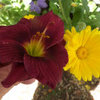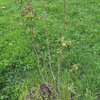Today's Latin Lesson: Calling All GW Linnaeuses!!
arbo_retum
15 years ago
Related Stories

KITCHEN PANTRIES80 Pretty and Practical Kitchen Pantries
This collection of kitchen pantries covers a wide range of sizes, styles and budgets
Full Story
SMALL HOMESEasy Green: 10 Tiny Homes That Live Large
Go ahead, micromanage. These 10 inventive spaces show how to pack a lot of living and style into small square footage
Full Story
BATHROOM DESIGN9 Surprising Considerations for a Bathroom Remodel
Don't even pick up a paint chip before you take these bathroom remodel aspects into account
Full Story
FALL GARDENING7 Reasons Not to Clean Up Your Fall Garden
Before you pluck and rake, consider wildlife, the health of your plants and your own right to relax
Full Story
DECORATING GUIDESMore Is More: The 10 Tenets of Maximalist Style
Ready to join the school of over-the-top design? Learn how to embrace excess in your interiors
Full Story
GARDENING FOR BUTTERFLIES3 Ways Native Plants Make Gardening So Much Better
You probably know about the lower maintenance. But native plants' other benefits go far beyond a little less watering and weeding
Full Story
ORGANIZINGPre-Storage Checklist: 10 Questions to Ask Yourself Before You Store
Wait, stop. Do you really need to keep that item you’re about to put into storage?
Full Story
ARBOR DAY8 Reasons to Plant a Great Tree
Beauty is its own reward, but the benefits of planting the right tree in the right place go way beyond looks
Full Story
DECORATING GUIDESDecorating With Antiques: Armoires, the Versatile Beauties
Give any room more character and function with an armoire — this queen of antiques is also a storage workhorse
Full Story





duluthinbloomz4
terrene
Related Discussions
to all of my amazing secret santas..thank you
Q
Pros, please share illustrated lessons?
Q
Thank you all for ideas and support, to the doubters I am sorry .
Q
Calling all Abraham Darby fans!
Q
ginny12
arbo_retumOriginal Author
diggerdee zone 6 CT
arbo_retumOriginal Author
lindac
cynthia_gw
remy_gw